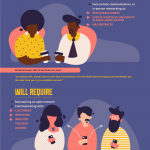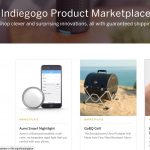How YouTube, Instagram, Pixar, And Others Found Major Success After A Big Pivot
1. Wrigley
Soap seller William Wrigley Jr. switched to hawking baking powder in the late 19th century. To drum up business, he gave away chewing gum, and eventually he realized that customers were more excited about the freebie. The gum stuck.
The payoff: Now a Mars subsidiary, Wrigley is the world’s largest gum manufacturer.
2. Nintendo
Fusajiro Yamauchi founded Nintendo in 1889 as a purveyor of playing cards. His great-grandson unsuccessfully expanded the company into taxis and “love hotels” before hitting gold in the early 1970s with an electronic shooting game.
The payoff: Gaming domination via Super Mario Bros., Game Boy, Wii, Pokémon Go, etc.
3. Listerine
The mouthwash was first marketed as a general-purpose antiseptic, meant to get rid of both household grime and, um, gonorrhea. In 1914, pharmaceutical company Warner-Lambert started selling it as a halitosis remedy.
The payoff: Current owner Johnson & Johnson sold $340 million worth of the stuff in 2015.
4. 3M
The Minnesota Mining and Manufacturing Company (get it? 3M) originally planned to sell excavated minerals to manufacturers. But when that didn’t work out as planned, it shifted to producing finished items, such as sandpaper.
The payoff: Some 60,000 products later, 3M makes everything from Post-its to surgical soap.
5. Texas Instruments
Geophysical Services Inc. made tech to help gas companies find oil. The start of WWII forced GSI to halt its profitable overseas business, so in 1946 it formed a lab to develop electronics.
The payoff: The lab grew into Texas Instruments, maker of your high school calculator and still a top semiconductor producer.
6. Pixar
When Steve Jobs bought into the business that would become Pixar, it was a maker of graphics oriented computers. He refocused on software, and Pixar later started making animated films.
The payoff: Pixar’s movies have pulled in more than $10 billion over the past 21 years.
7. PayPal
Conceived as a mobile-encryption service, the company switched to cash transactions (initially between PalmPilots). After eBay users latched onto the service, PayPal developed into the leading tool for web-based payments.
The payoff: PayPal helped fuel the e-commerce boom and today is worth more than $47 billion.
8. Flickr
Caterina Fake and then-husband Stewart Butterfield started Ludicorp to develop online games in 2002. One feature let players save pics, and it proved so popular they moved away from games and built a photo-sharing service.
The payoff: Flickr became the go-to home for digital photos and was acquired by Yahoo in 2005.
9. YouTube
YouTube launched in 2005 as a video-dating site. Users didn’t bite, but the company’s founders soon noticed that people had started sharing other kinds of video content.
The payoff: YouTube is the world’s second-most-visited site (after Google). Viewers consume 3.3 billion hours of video every month.
10. Instagram
Burbn tried to be many things: a Foursquare-style check-in app, a friend-meetup service, and a photo-sharing tool. Noticing that photos were users’ favorite feature, Kevin System ditched the other functions and rebranded as Instagram.
The payoff: More than 500 million monthly users post 95 million photos and videos a day.
A version of this article appeared in the November 2016 issue of Fast Company magazine.
1. Wrigley
Fast Company , Read Full Story
(31)












